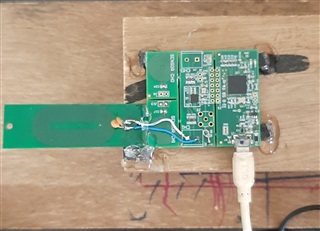Other Parts Discussed in Thread: LDC1612
I am using LDC1612EVM with a PCB coil designed using spread sheet LDC_Tools-ext50.xlsx.
A Racetrack coil of 40x20 mm with 0.2 mm track spacing and 0.4 mm track width is designed using LDC_Tools-ext50.xlsx.
Coil value is calculated as 12.974 uH. Spread sheet calculates 4.138 MHz with 110 pF capacitor. Q is calculated 85. RP 28.8 K.
I have disconnected ch1 coil on EVM board. When I connect above customized coil to LDC1612EVM Ch1, it shows frequency Value 3.03 MHz and coil value 25.0 uH. Any capacitor value I connect on EVM ch1 and set same value on GUI, it shows fix 3.03 MHz frequency always and changes only L value. I expect GUI to measure and show 4.138 MHz frequency and about 12.97 uH inductor value for Ch1.
Ch0 coil on EVM is not disconnected. GUI is configured for Ch1 Repeat Measurements.
Application is to detect a metal object of @ 3 mm distance. Spread sheet shows frequency shift of 65 KHz, but practically I detect only 1 to 3 KHz frequency shift.
Request tLDC Spread Sheet & GUI Screen Shots _1.pdfour technical help to resolve the issue. Screen snaps of GUI and spread sheets are attached herewith.


